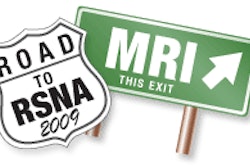Monday, November 30 | 10:30 a.m.-10:40 a.m. | SSC11-01 | Room E450B
Amid concerns about a link between gadolinium-based MR contrast agents and nephrogenic systemic fibrosis (NSF) in renal-impaired patients, researchers at M. D. Anderson Cancer Center have found that reduced or half-dose contrast enhancement of musculoskeletal lesions may be equivalent to full dose, allowing for cost savings and greater patient safety.Traditionally, the facility has followed the American College of Radiology's (ACR) guidelines for gadolinium MR contrast use. "In order to safeguard my patients, I wanted to make sure that only giving half of the recommended dose would be an acceptable practice," said lead author Dr. Colleen Costelloe, assistant professor of radiology in the musculoskeletal section at M. D. Anderson Cancer Center at the University of Texas in Houston.
The study retrospectively reviewed patients with musculoskeletal or spinal MRI from June 2007 to June 2008 with two exams at the same field strength (either both at 1.5 tesla or both at 3 tesla). One exam was conducted at full dose and one exam at a reduced contrast dose between 40% and 60%.
Five musculoskeletal radiologists were blinded to the dose differences and each was asked to compare the images and rate any difference in quality as mild, moderate, or severe.
Thirty-four patients were included with 17 lesions in bone and 17 lesions in soft tissue, with 27 pairs of exams scanned at 1.5 tesla and seven pairs at 3 tesla. Sixty-seven exams used Magnevist (Bayer HealthCare Pharmaceuticals, Wayne, NJ) and one used Omniscan (GE Healthcare, Chalfont St. Giles, U.K.).
After their evaluation, the readers were unable to accurately perceive a difference in lesion enhancement when full- and half-dose MRI examinations of the same lesion were compared.
"The statistics indicated that we did not find a significant difference between the reduced and full-dose exams," Costelloe said. Based on the results, "it is fully acceptable to give half dose and giving full dose may not be necessary in routine practice, which is something that will need to be evaluated in a much larger study."


.fFmgij6Hin.png?auto=compress%2Cformat&fit=crop&h=100&q=70&w=100)





.fFmgij6Hin.png?auto=compress%2Cformat&fit=crop&h=167&q=70&w=250)











